 |
Organic Society
Respectability in the Medieval Professions
Plinio Corrêa de Oliveira
In bona fide medieval History, we see Bishops who were not canonized and perhaps were not saints, but who did some extraordinary things in their lives that would certainly be a relevant part of their biographies should they be made saints. Take for instance the case of Bishop Adhemar de Monteuil, who was the papal legate for the first Crusade. I don’t know many things about his life, but let me suppose that he was not a saint. However, his presence during the first Crusade was the central element that unified those energetic and difficult to control Barons.
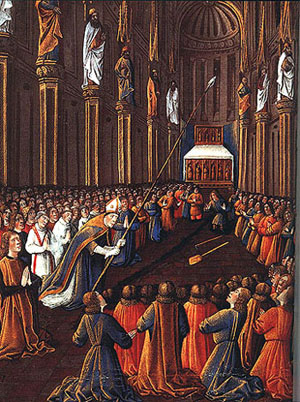
Bishop Adhemar de Monteuil with the Holy Lance, discovered buried in Antioch, on the First Crusade |
When we compare the history of the later Crusades to the first, we note that what the others lacked was a man to unify the different temporal interests of the Kings and Princes who participated in the fight. This cornerstone in the first Crusade was Bishop Adhemar de Monteuil. He was a very skillful diplomat who maintained harmony among the diverse leaders of the Crusade until Jerusalem was liberated and Godefroy of Bouillon was elected its first King. In a certain sense, the entire ideal of the Crusade relied on him. So, even supposing he did not have the heroic virtues necessary to be declared a saint, he carried out this unifying action that raised him far above the common action of men.
This is not an isolated case. It is an example of countless actions of good Bishops who were never raised to the altars. The existence of the many Bishops who were saints, added to these extraordinary actions of other Bishops, made the episcopal position highly respectable.
Thus, the medieval Bishop with his habit, miter, staff and adornments represents the ideal of a Bishop, an ideal immortalized in stone in the statues outside of the cathedrals. The religious life lived seriously generated a great deal of respectability for the episcopal office.
The medieval man saw the Bishop as representative of Our Lord Jesus Christ. He pictured Our Lord as a Bishop and the Bishop as Our Lord. The Bishop was for him the man who had the power to consecrate the host, forgive sins, the man who held the keys of all the powers in the Diocese and was the center of its life. He was the successor of the Apostles, and in a certain way represented for the people another St. Peter or St. Paul or any other of the Apostles.
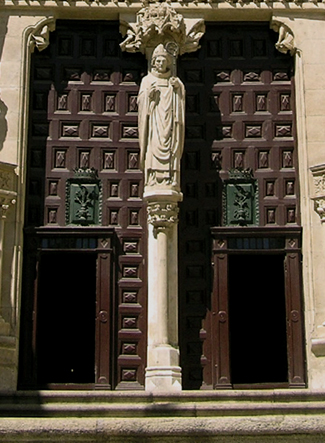
The figure of a Bishop on the Sarmental Portal
on the Cathedral of Burgos |
The Bishop’s life was isolated, shrouded in mystery, without the worldly pleasures. In a building called the Episcopal Palace he lived with dignity and even with comfort, but it was an isolated life, in a certain way like that of a solitary monk in the desert. These elements also added to the high respectability of the medieval Bishop, which extended to the priest.
Such respectability continued in good measure until John XXIII decided to “wipe away the dust that had accumulated in the Church since the time of Constantine.” He and his Council broke this ideal and generated a different type of Bishop and priest who do not inspire the public respect.
In one of his works, the well-known French author Paul Claudel describes a priest of a small village who spends his days walking the village streets, visiting and making apostolate with the people, shaking hands and making small talk. But no one thinks to invite him to stay longer. So, Claudel pictures the priest returning in the early evening to his rectory and being alone for the rest of the evening, with no one with him to keep him company. This solitude and mysterious loneliness would make the faithful view him under the light of a great respectability and tenderness.
This prestigious atmosphere surrounding the priest lasted in many places until a little before the Council. I knew a priest in São Paulo who was like this. He walked the streets of his parish, and wherever he passed, the children came running and asked for his blessing. He gave it freely with a smiling face full of goodness. Then, the children would scatter to play soccer on the street and he would continue his walk in a kind of cloud of solitude that returned to envelope him after each new contact. He was very respectable, giving us a smaller-scale idea of the respectability that encircled the Bishop.
The Emperor and the King
For the medieval man, the Emperor and the King also represented Our Lord Jesus Christ. Consider, for example, St. Ferdinand of Castile. The famous Alcazar of Segovia was a pivotal fortress-castle for controlling his kingdom.
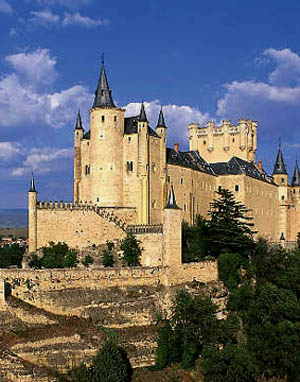
The famous Alcazar of Segovia, Spain |
So, let us imagine his life in the rooms of that castle. His throne was in the large ceremonial hall, and close to it was another large room, his living quarters where he stayed most of the time. It was a very serious, solemn and beautiful room where he and the Queen took care of their respective responsibilities.
Their one great distraction in the day was to walk through two large arches to a balcony that looked out onto the inner yard of the castle and the surrounding fields. We can imagine that beyond those fields was a small fortress of Templar knights. So, their great entertainment was to sit on two high-backed chairs on that balcony and watch the knights coming and going in their fortress. This was their one distraction. They had some few nobles in the court who were normally around them, but they habitually maintained a certain distance from the sovereigns. So, the King and Queen also lived in an atmosphere of recollection and seriousness.
When they would leave their quarters this would be an event for the people of the castle and neighboring villages. People would come to see the sovereigns, kneel when they would pass, ask the King’s blessing, etc. For them, the King was an image of Our Lord reflected in the temporal sphere. The King and the Queen enjoyed a great respectability, to which the sacrality and loneliness of their lives surrounded by a golden mystery contributed.
The head of the guild
The head of a guild was a like a small noble among its members. He was most respected. He had the respect due a leader and a venerable grandfather. He was highly considered for his experience, wisdom, skills and age.
Today, because of the seed of revolution that we carry in our spirits, we have lost even the notion of what that respectability represented as a factor of stability and good relations in society.
One thing we can do to begin to return to having an appreciation for that respectability is to fight the modern tendency to mock and laugh at everything. We should return to the patterns of innocence we had when we were children, and which many of us gave up in order to fit into this revolutionary world.

Posted December 13, 2007

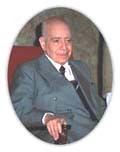  | | Prof. Plinio |
Organic Society was a theme dear to the late Prof. Plinio Corrêa de Oliveira. He addressed this topic on countless occasions during his life - at times in lectures for the formation of his disciples, at times in meetings with friends who gathered to study the social aspects and history of Christendom, at times just in passing.
Atila S. Guimarães selected excerpts of these lectures and conversations from the trancripts of tapes and his own personal notes. He translated and adapted them into articles for the TIA website. In these texts fidelity to the original ideas and words is kept as much as possible.

Related Topics of Interest
 Two Basic Aspects of the Medieval Mentality Two Basic Aspects of the Medieval Mentality
 Groups of Friends and Guilds Groups of Friends and Guilds
 The Organic Formation of Feudalism The Organic Formation of Feudalism
 Bias and Historical Error of Penty Bias and Historical Error of Penty
 The Decline of Feudalism and Growth of the Modern State The Decline of Feudalism and Growth of the Modern State
 False Statements About the Middle Ages False Statements About the Middle Ages
 Feudalism and the Modern State Feudalism and the Modern State

|
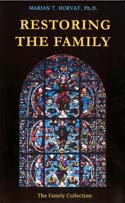
Organic Society | Social-Political | Home | Books | CDs | Search | Contact Us

© 2002- Tradition in Action, Inc. All Rights Reserved
|
 |
|
